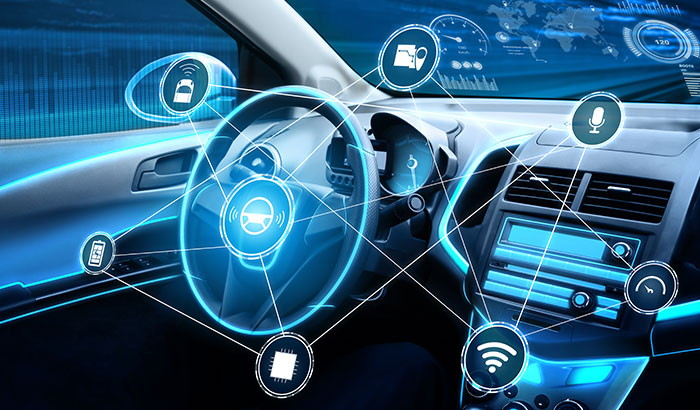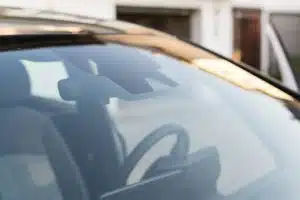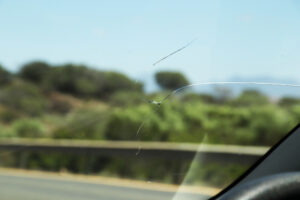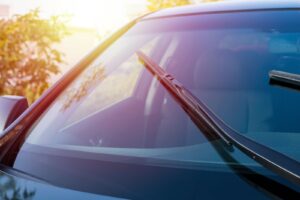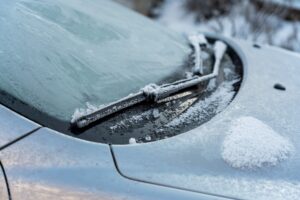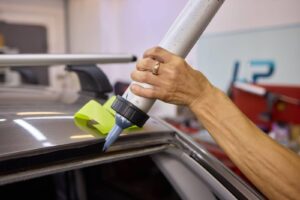If you have a newer car, there’s a good chance that it has ADAS systems. ADAS, or Advanced Driver Assistance Systems, is a technology designed to help drivers stay safe on the road.
From lane departure warnings to automatic emergency braking, ADAS systems are revolutionizing how we think about driving.
In this article, we’ll dive into everything you need to know about ADAS systems; their benefits, limitations, and maintenance tips and tricks.
Types of ADAS Systems
ADAS technology includes a collection of safety features installed in modern vehicles. They use a combination of sensors, cameras, and radar technology to keep drivers safe and out of accidents. The systems can detect and alert drivers to potential dangers as they drive, sometimes even taking corrective action for the driver.
These systems are constantly evolving and changing. Several types of ADAS technologies are installed on cars, including:
- Adaptive Cruise Control: This allows drivers to set a desired cruising speed and maintain a safe distance from the vehicle in front of them on the road. Radar technology detects the distance between cars and adjusts the speed accordingly.
- Lane Departure Warning: The Lane Departure Warning system uses cameras to monitor the vehicle’s position within the lane. If the vehicle drifts out of its lane, the system alerts the driver through visual or audible warnings.
- Blind Spot Monitoring: The Blind Spot Monitoring system uses sensors to detect other vehicles in the driver’s blind spots. If another vehicle is detected, the system alerts the driver through visual or audible warnings.
- Automatic Emergency Braking: This system uses sensors to detect an imminent collision and applies the brakes automatically to prevent or mitigate a crash. AEB is one of the most critical ADAS systems, as it can significantly reduce the risk of severe accidents.
- Parking Assist: Parking Assist uses cameras and sensors to detect the vehicle’s position in relation to other objects and assists the driver in parking. If you need help parking on a busy Salt Lake City street, it can either provide visual or audible cues or take control of the steering wheel to park the car automatically.
All of these features significantly improve safety on the road. Understanding these systems and familiarizing yourself with them is essential to taking full advantage of your vehicle’s features, helping keep you and your passengers safe while you drive.
Limitations of ADAS Systems
ADAS technology offers many benefits to drivers and does an excellent job of keeping people on the road safe. Still, there are a few limitations that you should be aware of if you have ADAS in your vehicle. Some of those limitations include the following:
- Limited effectiveness in certain situations: If there’s heavy fog or rain during your commute to Salt Lake City or Provo, your ADAS technology may not work correctly.
- False alarms: If the sensors are dirty or not calibrated correctly, they could potentially identify harmless objects as hazards and trigger false alarms.
- Limited coverage area: ADAS technology can only cover a certain distance, meaning that it can’t sense every hazard that may be nearby.
While ADAS systems offer significant benefits in enhancing driver safety, they also have limitations drivers should be aware of. Understanding the limitations of these systems is essential to make informed decisions while driving.
By remaining attentive and vigilant while driving and following the maintenance requirements, drivers can maximize the effectiveness of these systems and stay safe on the road.
Maintenance of ADAS Systems
To ensure the effectiveness of ADAS systems, regular maintenance is essential. These systems rely on various sensors and cameras to function correctly, and any damage or malfunction in these components can significantly reduce their effectiveness. Here are some essential maintenance requirements for ADAS systems:
- Keep the windshield clean and clear: The windshield plays a crucial role in the functioning of ADAS systems, as the cameras and sensors are usually mounted on or near it. Keeping the windshield clean and clear of debris or cracks is essential to ensure that the sensors and cameras can detect hazards accurately.
- Recalibration of the camera: If the windshield or any of the sensors or cameras are replaced, recalibration of the camera is necessary to ensure that the ADAS systems function correctly. ADAS calibrations ensure the cameras are correctly aligned and calibrated, allowing the ADAS systems to detect hazards accurately.
- Regular inspection and maintenance: Regular inspections and maintenance of ADAS systems are essential to identify any damage or malfunctions in the sensors or cameras. Any damage or malfunction can reduce the effectiveness of these systems, making it necessary to promptly identify and rectify any issues.
- Software Updates: ADAS systems rely on software to function correctly, and software updates can enhance the performance of these systems. Manufacturers typically release regular software updates to improve the accuracy and functionality of these systems, making it essential to keep them up-to-date.
Regular maintenance is essential to ensure the effectiveness of ADAS systems. By keeping the windshield clean, recalibrating the cameras, performing regular inspections and maintenance, and installing software updates, drivers can maximize the effectiveness of these systems and stay safe on the road.
It’s essential to follow the manufacturer’s guidelines for maintenance requirements and have a professional ADAS service provider perform any necessary maintenance or repairs.
Need ADAS Recalibration? Utah Mobile Auto Glass Can Help
Cracks in your windshield can happen anytime, potentially causing your vehicle’s ADAS systems to malfunction. Cracked windshields should be replaced as soon as possible, as they can obstruct your view and potentially lead to an accident. ADAS calibrations need to be done after replacing a windshield.
At Utah Mobile Auto Glass, we can help you out with both. If you need a windshield replacement and ADAS calibrations, we can get both done in a single appointment.
We take great pride in our work and the reputation we have built over the years. Based in Sandy, Utah, we provide excellent service throughout Salt Lake County and Utah County, including Bountiful, Utah.
When you choose to work with us, you can expect nothing less than exceptional customer service and complete transparency throughout the entire process. Contact us today, and let’s get you back on the road as soon as possible.


